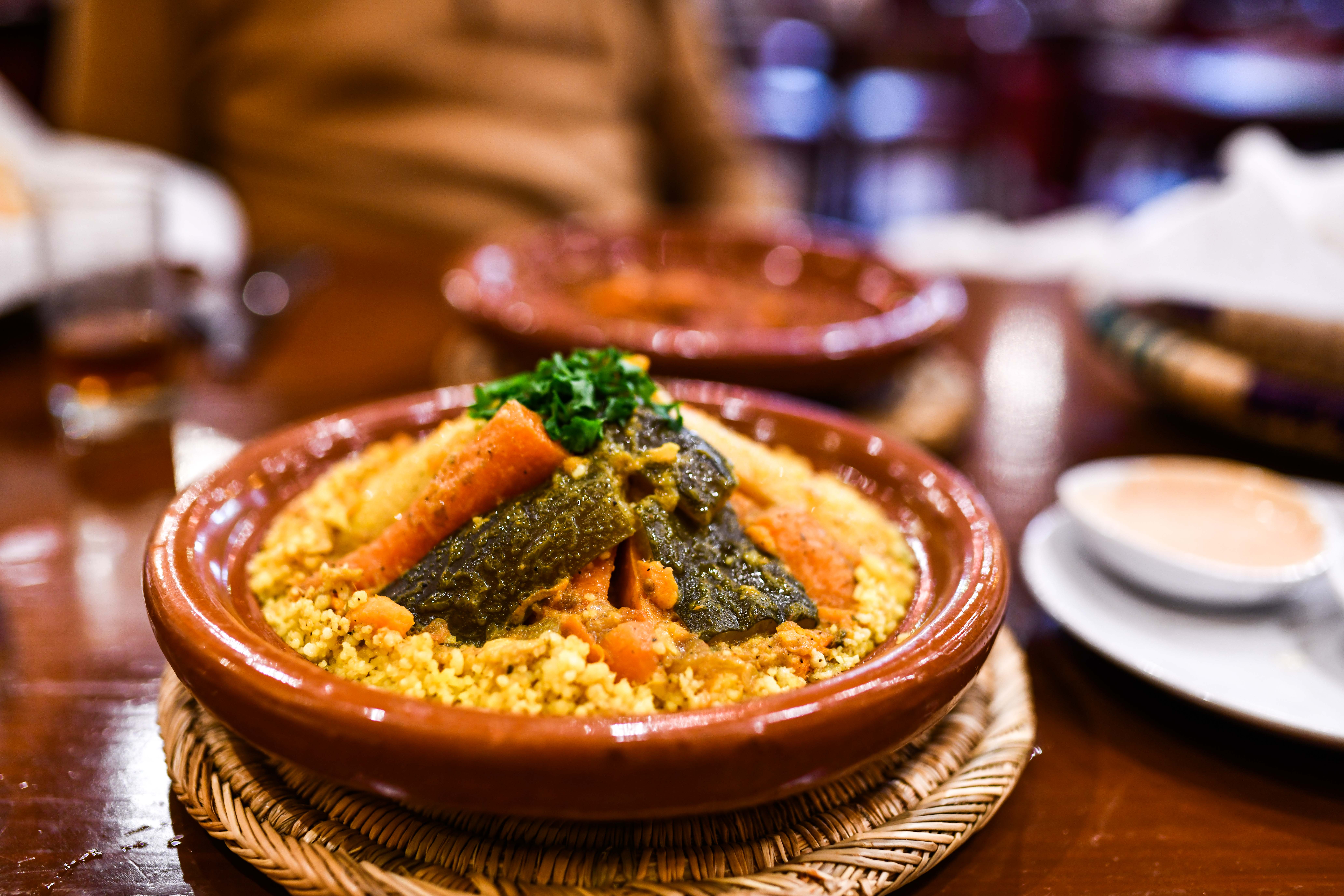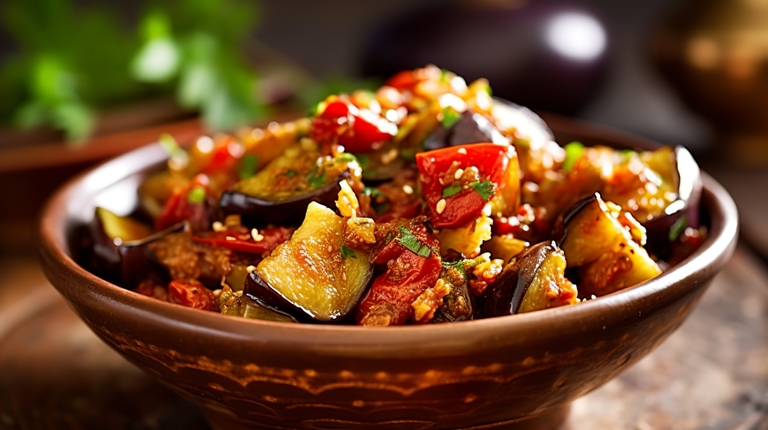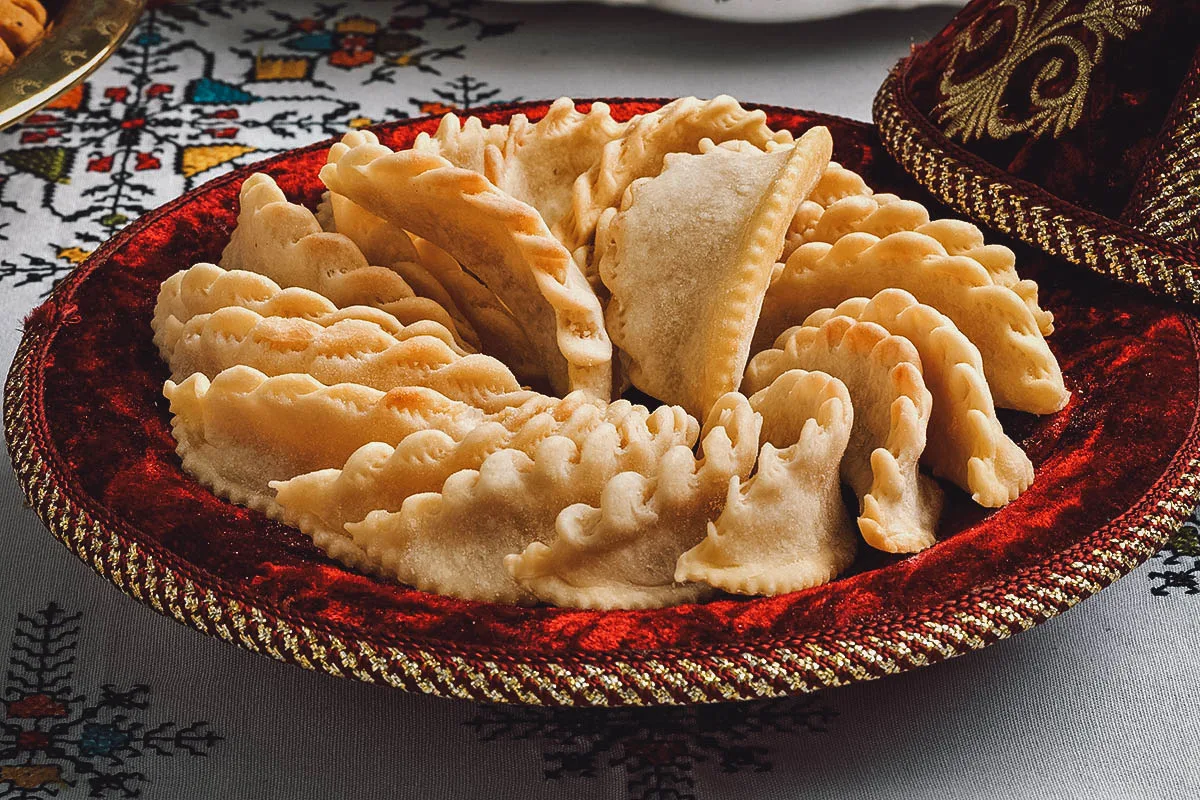Find the Perfect Mediterranean Restaurant Las Vegas for Any Meal
Find the Perfect Mediterranean Restaurant Las Vegas for Any Meal
Blog Article
Mediterranean Food: A Flavorful Trip Through Tradition and Preference
Mediterranean cuisine offers as an exceptional intersection of practice and preference, attracting from a diverse selection of cultures that cover continents. This cooking heritage not only showcases making use of fresh, local components but likewise highlights the relevance of communal dining experiences that have been cherished for generations. The extensive tastes and wellness benefits linked with the Mediterranean diet have garnered worldwide affection, yet underneath its surface area lies an intricate narrative of historical influences and local specialties that necessitate additional exploration. What unique elements contribute to its long-lasting appeal and significance in modern culinary methods?
Beginnings of Mediterranean Food
The beginnings of Mediterranean cuisine are deeply rooted in a rich tapestry of history, location, and cultural exchange. This culinary custom emerges from a region defined by its diverse landscapes, consisting of coasts, mountains, and fertile plains, which have affected its agricultural methods and food manufacturing. The Mediterranean Basin, including countries such as Italy, Greece, Spain, and Turkey, has been a crossroads of human beings for centuries, where trade routes promoted the exchange of active ingredients, strategies, and culinary ideologies.
Ancient societies, including the Greeks and Romans, dramatically designed Mediterranean foodways, emphasizing the significance of fresh, seasonal produce and public dining. The spread of agriculture, particularly the cultivation of grains, olives, and grapes, laid the structure for dishes that remain staples today. The impact of numerous conquerors and traders, such as the Moors and Ottomans, introduced cooking styles and new flavors, even more enhancing the food.
Today, Mediterranean cuisine is celebrated not only for its taste and diversity but also for its emphasis on healthful eating, embodying a balanced method to nutrition that proceeds to interest worldwide palates. This historic interaction of components and cultures creates the essence of what we currently identify as Mediterranean food.
Key Components and Flavors
Mediterranean food is characterized by a vibrant selection of vital active ingredients and tastes that show the area's agricultural bounty and social heritage. Central to this cooking custom are fresh veggies, fruits, and herbs, which provide important nutrients and vibrant preferences. mediterranean restaurant las vegas. Staples such as tomatoes, eggplants, olives, and bell peppers are often included, showcasing the region's diverse environment and dirt
Olive oil, often considered as the backbone of Mediterranean cooking, conveys richness and depth to dishes. It is matched by a selection of spices and natural herbs, including oregano, garlic, and basil, which elevate the flavors of meats, seafood, and grains. Grains, especially wheat and rice, work as fundamental parts, with recipes like couscous and pasta being staples across the area.
In addition, beans such as chickpeas and lentils not only provide protein yet likewise add to the cuisine's robustness. Jointly, these components create a harmonious equilibrium that specifies Mediterranean food.
Regional Variants and Specialties
Diverse regional variations and specialties identify Mediterranean food, reflecting the one-of-a-kind cultural influences, location, and background of each location. In the coastal regions of Italy, for instance, fish and shellfish preponderates, with recipes like Sicilian caponata showcasing a blend of eggplant, olives, and capers. Greece is renowned for its use of feta cheese, olives, and fresh herbs, apparent in classic prep work such as moussaka and spanakopita.
The Levantine nations, including Lebanon and Syria, highlight the usage of grains and flavors, with specialties like tabbouleh and kibbeh taking spotlight. North Africa, specifically Morocco, stands out for its aromatic tagines and couscous, usually enriched with dried out fruits and an abundant array of spices.
On the other hand, the Iberian Peninsula highlights the usage of healed meats and strong tastes, with Spanish paella and Portuguese bacalhau exemplifying the area's culinary variety.
Each Mediterranean region not only commemorates its regional components however also mirrors the historic trade paths and cultural exchanges that have actually shaped its food society, developing a vibrant Recommended Reading tapestry of tastes that captivates the taste.
Food Preparation Methods and Designs
Food preparation methods and designs in Mediterranean cuisine are as varied as the areas themselves, often reflecting regional customs and available components. The heart of Mediterranean food preparation depends on its simpleness, where fresh produce, herbs, and olive oil take center stage. Techniques such as cooking, roasting, and sautéing are frequently employed, allowing the all-natural tastes of the ingredients to radiate.
Cooking, widespread in coastal areas, infuses fish and shellfish and meats with a smoky splendor, while toasting, particularly in the Center East, enhances the sweet taste of root vegetables and meats. Sautéing, often made use of in Italian and Spanish dishes, gives a quick technique to bring out the splendor of garlic and onions, serving as a foundation for many sauces.
Stewing is one more vital method, especially in North African foods, where tagines simmer aromatic flavors and tender meats slowly, combining tastes with site time - mediterranean restaurant las vegas. Baking, specifically in the context of bread and pastries, holds a considerable place in Mediterranean society, with each region flaunting its very own specializeds. Generally, these diverse cooking techniques not only commemorate the components yet also show the ingrained cooking heritage of the Mediterranean, making each recipe a testament to its rich history

Wellness Advantages of Mediterranean Diet Regimen
On a regular basis identified for its countless health benefits, the Mediterranean diet plan emphasizes the intake of entire, minimally processed foods that promote overall well-being. This dietary pattern is abundant in fruits, veggies, whole grains, vegetables, nuts, and healthy fats, especially olive oil, while motivating moderate intake of fish and poultry and limiting red meat and sweets.
Research continually connects the Mediterranean diet plan to a selection of health and wellness advantages. Significantly, it has actually been related to a lowered threat of cardiovascular illness, greatly as a result of its emphasis on heart-healthy fats and anti-oxidants. The diet is also thought to boost cognitive feature and may reduce the risk of neurodegenerative conditions such as Alzheimer's.
Additionally, the Mediterranean diet regimen sustains weight monitoring with its focus on nutrient-dense foods that promote satiety. The high fiber material from fruits, vegetables, and whole grains aids digestion and aids preserve healthy and balanced blood sugar level degrees.
Along with physical health and wellness, the Mediterranean diet promotes social health, great post to read as it motivates public dishes and shared cooking experiences. In general, embracing this diet is not only a path to boosted wellness yet likewise an event of flavors, society, and community.

Final Thought
Finally, Mediterranean food functions as a rich tapestry of practice and taste, showcasing diverse regional flavors and components. The emphasis on fresh produce, olive oil, and fragrant herbs not only boosts culinary experiences yet also advertises countless health benefits. By embracing time-honored cooking strategies and fostering communal dining, this cooking heritage remains to inspire and connect individuals across cultures, solidifying its status as a cherished and significant element of international gastronomy.

Cooking techniques and styles in Mediterranean food are as differed as the regions themselves, commonly mirroring offered ingredients and local customs.In final thought, Mediterranean cuisine serves as a rich tapestry of custom and taste, showcasing diverse local flavors and ingredients.
Report this page